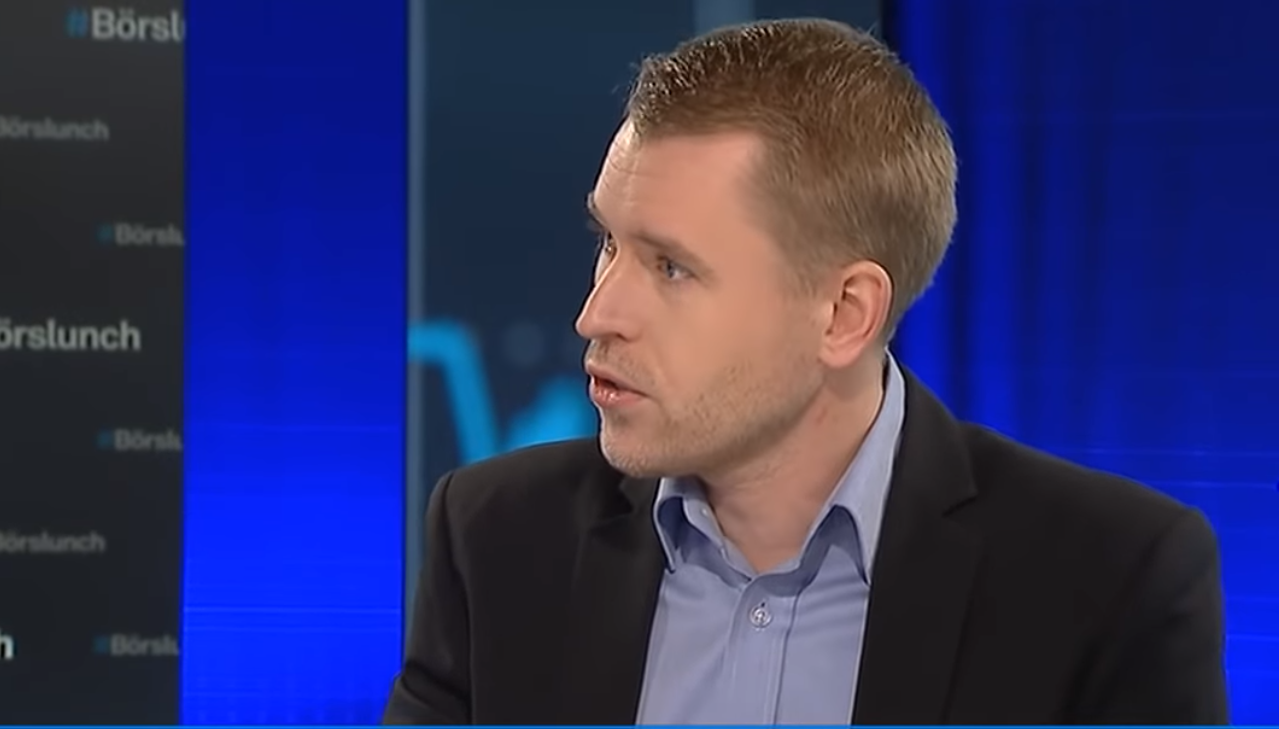Analys från DailyFX
Dollar Technical Analysis: Looking For Resistance at 13-Year Highs
Talking Points:
- Dollar Technical Strategy: Confirmed Uptrend Too Aggressive To Fight
- Should DXY Strength Continue Like H2 2014, Pain Could Became Widespread
- USD Price Action Setups as the U.S. Dollar Sets Fresh 13-Year High
The Dollar Index (DXY) has broken to new highs that haven’t been traded at since April 2003. Much of the move has been helped by significant EUR JPY weakness as markets digest how these inflation-hungry economies will fare under Donald Trump’s victory of the U.S. Election.
The Dollar strength may be welcomed by Mario Draghi Kuroda, who have been silent as the EUR pushes new 2016 lows and USD/JPY has moved from 101.50 to almost 110 in a week’s time. As the USD strengthens, countries that import dollars and goods from the U.S. are in effect able to import inflation as the stronger USD will require more JPY or EUR to purchase the same basket, which helps put a spark under inflation readings.
Access Our Free Q4 Dollar Outlook As The Fed Decides How To Handle a Trump Presidency
We continue to see aggressive repricing on the Fed Funds Rate, and we’ve also seen the cost of 3-month USD borrowing as per the ICE 3M USD LIBOR move as high as 91.22bs, which is the highest since April 2009. Regarding priced in FOMC action, we have yet to see a priced-in second hike. When the Federal Reserve announces their reference rate on December 14, we will likely get a better sense of how the Fed expects to react should the price of Treasuries continue to fall as the yields push further higher. Any hint from Yellen Co. via a higher Dot Plot or an announcement at the post-FOMC press conference could cause a repricing of anticipated Fed action that could further strengthen the USD.
As we’ve been discussing, the technical picture developing (to be discussed below) may be unfolding that an aggressive breakout could be unfolding that continues to take us to levels not seen since the USD was falling as the Fed was coming off their hiking cycle in the late 1990s.
One last encouragement is to keep an eye on U.S. Treasury Yields. Much of the USD strength can be seen here as we’ve seen a 1M change in yields of 43pbs. This type of move shows panic selling (yields rise as prices fall), and you should be weary of expecting markets to “respect” support or resistance with the strength and suddenness of the moves across the board.
D1 Chart Provides Fibonacci Cluster Targets Based On Possible Wave Counts
The chart above shows the sharp ascent of DXY from last-Wednesday’s lows. The last time we saw such an aggressive move was Q4 2015 as the Fed began to prepare the market for a rate hike. At the time, the Fed was preparing for a series of hikes as we saw in the December Dot Plot, which looked at an average of a 50-100bp rise in 2015. With one FOMC meeting left in 2016, we’re looking to be stuck with one. However, 2017 may be a different story.
As one bank-desk noted, we may be going from a world of “one and done,” to “two and through.” The idea here would be the possibility of many more hikes than priced in if yields and inflations pressures begin to show up faster than expected.
That chart above shows DXY traded at new 13-year highs on Wednesday. Therefore, there are no recent pivots to point as possible inflection points on the chart. However, we can utilize Fibonacci Expansions which looks as measured moves and multiples in the direction of the impulse to gauge the strength of the Trend.
Using Fibonacci Expansions is common in impulsive waves as framed by Elliott Wave Analysis. On the DXY, Elliott Wave analysis shows that we could have completed a double-three (W-X-Y) corrective or countertrend pattern that may have exhausted at the end of September. The corrective pattern looks to be composed of a Flat-Zig Zag-Triangle pattern that is now giving way to an aggressive advancement of the trend higher.
Another interpretation is that we finished a correction in May, that was followed by a leading diagonal in late July, and the corrective bottom that aligns with the bottom of the Andrew’s Pitchfork in August. From there, we could be in the midst of an impulsive wave higher.
Either count favors the probable odds to be higher, and possibly quite higher. Other indicators like Ichimoku the Andrew’s Pitchfork price channel help to draw a price frame and support around the strong move, but the idea to take away from the potential Elliott Wave count is that we’re working on an impulsive advance that could unfold painfully and would likely not be worth fighting.
Shorter-Term DXY Technical Levels for Wednesday, November 16, 2016
For those interested in shorter-term levels of focus than the ones above, these levels signal important potential pivot levels over the next 48-hours of trading.
T.Y.
Analys från DailyFX
EURUSD Weekly Technical Analysis: New Month, More Weakness
What’s inside:
- EURUSD broke the ‘neckline’ of a bearish ‘head-and-shoulders’ pattern, April trend-line
- Resistance in vicinity of 11825/80 likely to keep a lid on further strength
- Targeting the low to mid-11600s with more selling
Confidence is essential to successful trading, see this new guide – ’Building Confidence in Trading’.
Coming into last week we pointed out the likelihood of finally seeing a resolution of the range EURUSD had been stuck in for the past few weeks, and one of the outcomes we made note of as a possibility was for the triggering of a ’head-and-shoulders’ pattern. Indeed, we saw a break of the ’neckline’ along with a drop below the April trend-line. This led to decent selling before a minor bounce took shape during the latter part of last week.
Looking ahead to next week the euro is set up for further losses as the path of least resistance has turned lower. Looking to a capper on any further strength there is resistance in the 11825-11880 area (old support becomes new resistance). As long as the euro stays below this area a downward bias will remain firmly intact.
Looking lower towards support eyes will be on the August low at 11662 and the 2016 high of 11616, of which the latter just happens to align almost precisely with the measured move target of the ‘head-and-shoulders’ pattern (determined by subtracting the height of the pattern from the neckline).
Bottom line: Shorts look set to have the upperhand as a fresh month gets underway as long as the euro remains capped by resistance. On weakness, we’ll be watching how the euro responds to a drop into support levels.
For a longer-term outlook on EURUSD, check out the just released Q4 Forecast.
EURUSD: Daily
—Written by Paul Robinson, Market Analyst
You can receive Paul’s analysis directly via email bysigning up here.
You can follow Paul on Twitter at@PaulRobinonFX.
Analys från DailyFX
Euro Bias Mixed Heading into October, Q4’17

Why and how do we use IG Client Sentiment in trading? See our guide and real-time data.
EURUSD: Retail trader data shows 37.3% of traders are net-long with the ratio of traders short to long at 1.68 to 1. In fact, traders have remained net-short since Apr 18 when EURUSD traded near 1.07831; price has moved 9.6% higher since then. The number of traders net-long is 15.4% lower than yesterday and 16.4% higher from last week, while the number of traders net-short is 0.4% higher than yesterday and 10.5% lower from last week.
We typically take a contrarian view to crowd sentiment, and the fact traders are net-short suggests EURUSD prices may continue to rise. Positioning is more net-short than yesterday but less net-short from last week. The combination of current sentiment and recent changes gives us a further mixed EURUSD trading bias.
— Written by Christopher Vecchio, CFA, Senior Currency Strategist
To contact Christopher Vecchio, e-mail cvecchio@dailyfx.com
Follow him on Twitter at @CVecchioFX
To be added to Christopher’s e-mail distribution list, please fill out this form
Analys från DailyFX
British Pound Reversal Potential Persists Heading into New Quarter

Why and how do we use IG Client Sentiment in trading? See our guide and real-time data.
GBPUSD: Retail trader data shows 38.2% of traders are net-long with the ratio of traders short to long at 1.62 to 1. In fact, traders have remained net-short since Sep 05 when GBPUSD traded near 1.29615; price has moved 3.4% higher since then. The number of traders net-long is 0.1% higher than yesterday and 13.4% higher from last week, while the number of traders net-short is 10.6% lower than yesterday and 18.3% lower from last week.
We typically take a contrarian view to crowd sentiment, and the fact traders are net-short suggests GBPUSD prices may continue to rise. Yet traders are less net-short than yesterday and compared with last week. Recent changes in sentiment warn that the current GBPUSD price trend may soon reverse lower despite the fact traders remain net-short.
— Written by Christopher Vecchio, CFA, Senior Currency Strategist
To contact Christopher Vecchio, e-mail cvecchio@dailyfx.com
Follow him on Twitter at @CVecchioFX
To be added to Christopher’s e-mail distribution list, please fill out this form
-
Analys från DailyFX10 år ago
EUR/USD Flirts with Monthly Close Under 30 Year Trendline
-

 Marknadsnyheter2 år ago
Marknadsnyheter2 år agoUpptäck de bästa verktygen för att analysera Bitcoin!
-
Marknadsnyheter5 år ago
BrainCool AB (publ): erhåller bidrag (grant) om 0,9 MSEK från Vinnova för bolagets projekt inom behandling av covid-19 patienter med hög feber
-
Analys från DailyFX12 år ago
Japanese Yen Breakout or Fakeout? ZAR/JPY May Provide the Answer
-

 Marknadsnyheter2 år ago
Marknadsnyheter2 år agoDärför föredrar svenska spelare att spela via mobiltelefonen
-
Analys från DailyFX12 år ago
Price & Time: Key Levels to Watch in the Aftermath of NFP
-
Analys från DailyFX8 år ago
Gold Prices Falter at Resistance: Is the Bullish Run Finished?
-

 Nyheter7 år ago
Nyheter7 år agoTeknisk analys med Martin Hallström och Nils Brobacke












